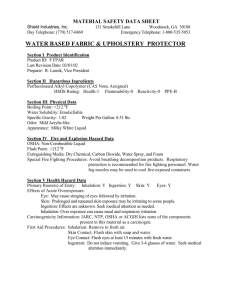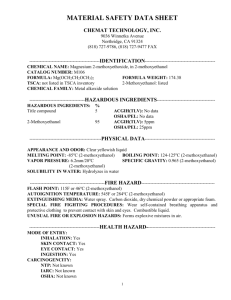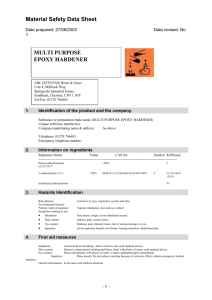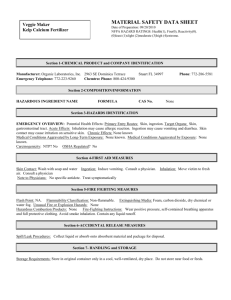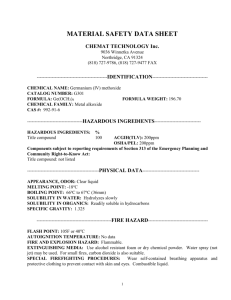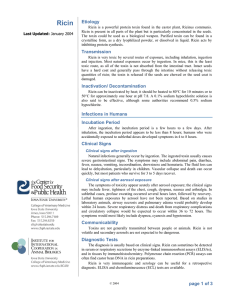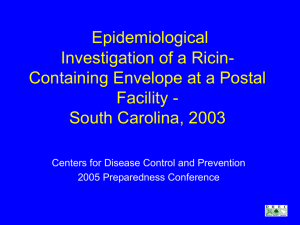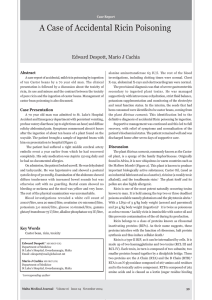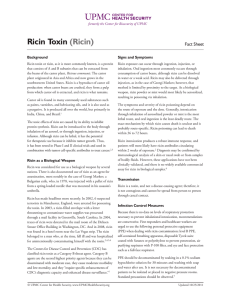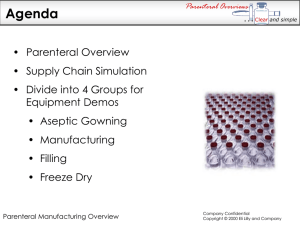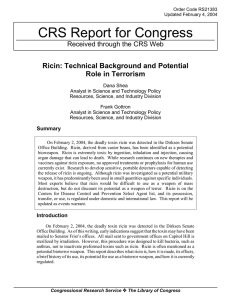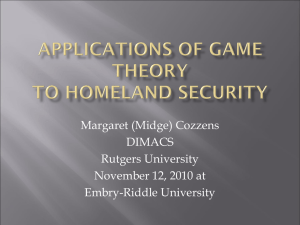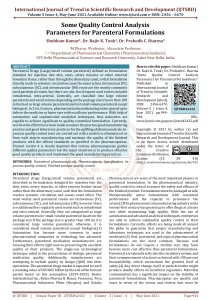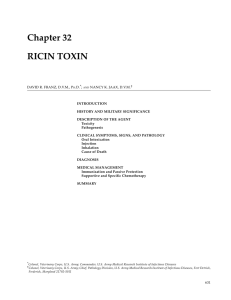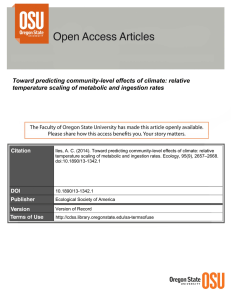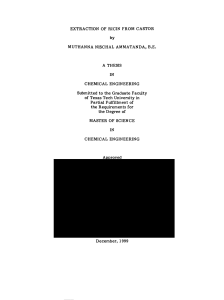Medical Delaware Health & Social Services Division of Public Health
advertisement
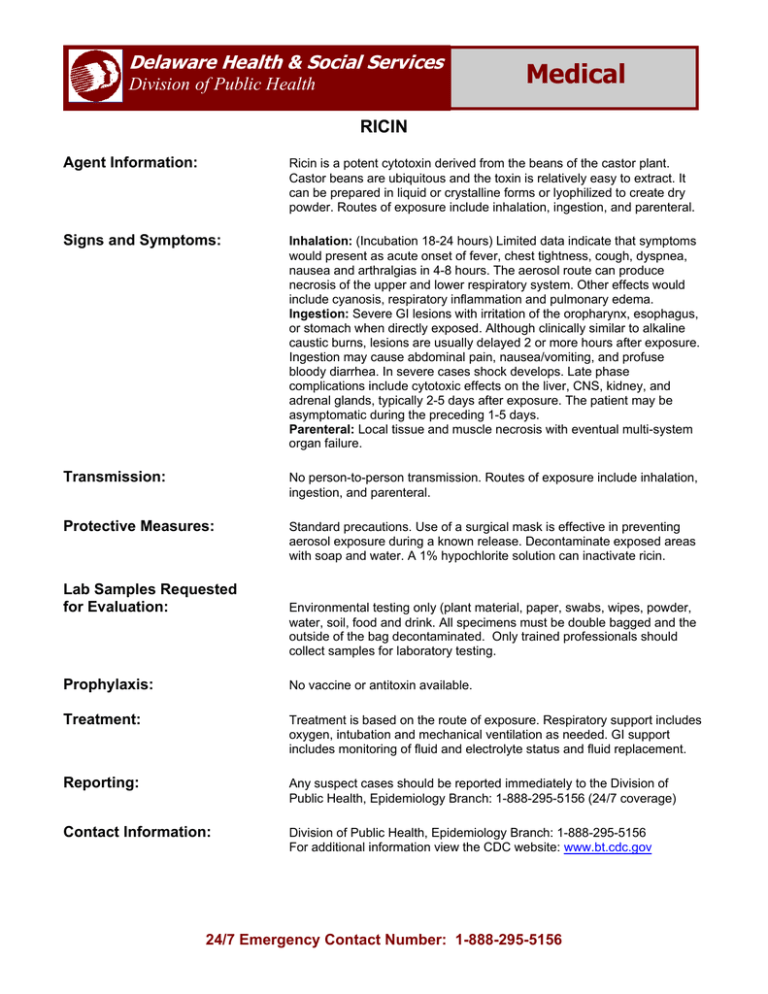
Delaware Health & Social Services Division of Public Health Medical RICIN Agent Information: Ricin is a potent cytotoxin derived from the beans of the castor plant. Castor beans are ubiquitous and the toxin is relatively easy to extract. It can be prepared in liquid or crystalline forms or lyophilized to create dry powder. Routes of exposure include inhalation, ingestion, and parenteral. Signs and Symptoms: Inhalation: (Incubation 18-24 hours) Limited data indicate that symptoms would present as acute onset of fever, chest tightness, cough, dyspnea, nausea and arthralgias in 4-8 hours. The aerosol route can produce necrosis of the upper and lower respiratory system. Other effects would include cyanosis, respiratory inflammation and pulmonary edema. Ingestion: Severe GI lesions with irritation of the oropharynx, esophagus, or stomach when directly exposed. Although clinically similar to alkaline caustic burns, lesions are usually delayed 2 or more hours after exposure. Ingestion may cause abdominal pain, nausea/vomiting, and profuse bloody diarrhea. In severe cases shock develops. Late phase complications include cytotoxic effects on the liver, CNS, kidney, and adrenal glands, typically 2-5 days after exposure. The patient may be asymptomatic during the preceding 1-5 days. Parenteral: Local tissue and muscle necrosis with eventual multi-system organ failure. Transmission: No person-to-person transmission. Routes of exposure include inhalation, ingestion, and parenteral. Protective Measures: Standard precautions. Use of a surgical mask is effective in preventing aerosol exposure during a known release. Decontaminate exposed areas with soap and water. A 1% hypochlorite solution can inactivate ricin. Lab Samples Requested for Evaluation: Environmental testing only (plant material, paper, swabs, wipes, powder, water, soil, food and drink. All specimens must be double bagged and the outside of the bag decontaminated. Only trained professionals should collect samples for laboratory testing. Prophylaxis: No vaccine or antitoxin available. Treatment: Treatment is based on the route of exposure. Respiratory support includes oxygen, intubation and mechanical ventilation as needed. GI support includes monitoring of fluid and electrolyte status and fluid replacement. Reporting: Any suspect cases should be reported immediately to the Division of Public Health, Epidemiology Branch: 1-888-295-5156 (24/7 coverage) Contact Information: Division of Public Health, Epidemiology Branch: 1-888-295-5156 For additional information view the CDC website: www.bt.cdc.gov 24/7 Emergency Contact Number: 1-888-295-5156

